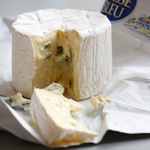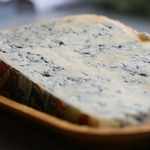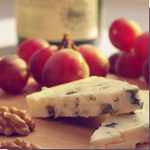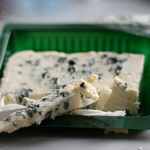French Blue Cheese
There are dozens of French blue cheese just waiting for you to discover them. They might be made from cow's milk, sheep's milk or even goat's milk and they vary considerably in their shape, flavor, and consistency. Here is an introduction to the better known varieties of French blue cheese.
Making Blue Cheese
AOC - Appellation d'Origine Contrôlée - A designation given by the French government to signal that a French cheese, wine or produce has been made according to a set of strictly controlled criteria, including location requirements.
AOP - Appellation d'Origine Protégée - A designation given by the European Union to European foods and wine that are made in a strictly controlled fashion. The AOP is slated to gradually replace the AOC.
In France, blue cheeses are known as les fromages à pâte persillée (roughly translated as spotted cheese). Their distinctive blue-green veining is what gives them their name in both languages. This blue veining is caused by the fungus, penicillium roqueforti, which is introduced into the cheese before it is aged.
As it ages, the cheese maker carefully inserts long needles into the cheese, which allows air to reach the penicillium roqueforti and cause it to proliferate. It is this fungus that gives blue cheese its strong and delicious taste as well as its characteristic color.
French Blue Cheese Varieties
Bleu d'Auvergne (AOC)
Made for over 150 years in the Auvergne region, this French blue cheese is firm textured with a strong smell and taste. It exhibits heavy blue-green veining and is produced in two to three kilogram cylinders, that are then cut
vertically to be sold in slices.
Bleu de Bresse

This cheese is made in the former province of Bresse in the east of France. These days it is almost all made in a large scale, industrial fashion. It is a rich and creamy cheese that exhibits patches of blue mold rather than veining throughout. This is a fairly mild tasting cheese, perhaps a sort of French blue cheese for beginners.
Bleu des Causses (AOC)
Roquefort and bleu des Causses are both ancient cheeses made in the same area and in a similar fashion. In the past, it was perhaps difficult to say which was which, but their AOC's now clearly separate the two cheeses: Bleu des Causses is made from cow's milk and
Roquefort from sheep's milk. This cheese is formed in large flat cylinders that are then cut like a pie to be sold in slices. It is milder than Roquefort, with less of a tangy bite, but nonetheless full of flavor.
Bleu du Haut Jura - Bleu de Gex - Bleu de Septmoncel (AOC)

This cheese might be known by any of these three names, but they are all controlled by the same AOC. A mild tasting, yet very flavorful, cow's milk cheese, Bleu de Gex has a history stretching back to the 13th century. It has fine
veining visible throughout the cheese and is formed in cylinders weighing more than seven kilograms.
Fourme d'Ambert (AOC)
The name fourme comes from the Latin word forma (form), which is also the origin of the French word for cheese, fromage. This very ancient cheese from the Auvergne region is molded in tall cylinders, each weighing several kilograms, then sold in circular slices. It is a milder tasting French blue cheese.
Like some other French cheeses, there are two sorts of Fourme d'Ambert: laitière and fermière. A latière product is made in a factory and a fermière product is made at the farm where the cows are milked. Guess which one cheese connoisseurs prefer?
Persillé des Aravis
The goats that make the milk for this cheese graze in the Alps in the Savoy region of France. It has a washed rind that hardens with aging, and irregular veining that becomes more apparent with aging as well. Blue goat cheeses
can be hard to find even in France because the production is more limited then for cow's milk cheeses. They are typically noted for their delicate grassy flavors.
Roquefort (AOC)

The most famous of French blue cheese, Roquefort is made from sheep's milk. This cheese has a strong smell and a strong, tangy flavor. Roquefort is crumbly but melts smooth in your mouth or into recipes. The cheese shows heavy
veining. and has no real rind. Because it is such an old cheese, there are many charming stories that accompany Roquefort.
Saint Agur

A brand of blue cheese, Saint Agur is sort of snubbed by cheese connoisseurs, because it is made in a very industrialized fashion. There are no official controls over where the milk comes from to make Saint Agur, which means it lacks in the terroir department. This is a strong tasting cheese with a long lasting flavor that comes back in waves after you have swallowed. Enjoy this with a generous red wine.
Return to French Cheese.
New! Comments
Have your say about what you just read! Leave me a comment in the box below.